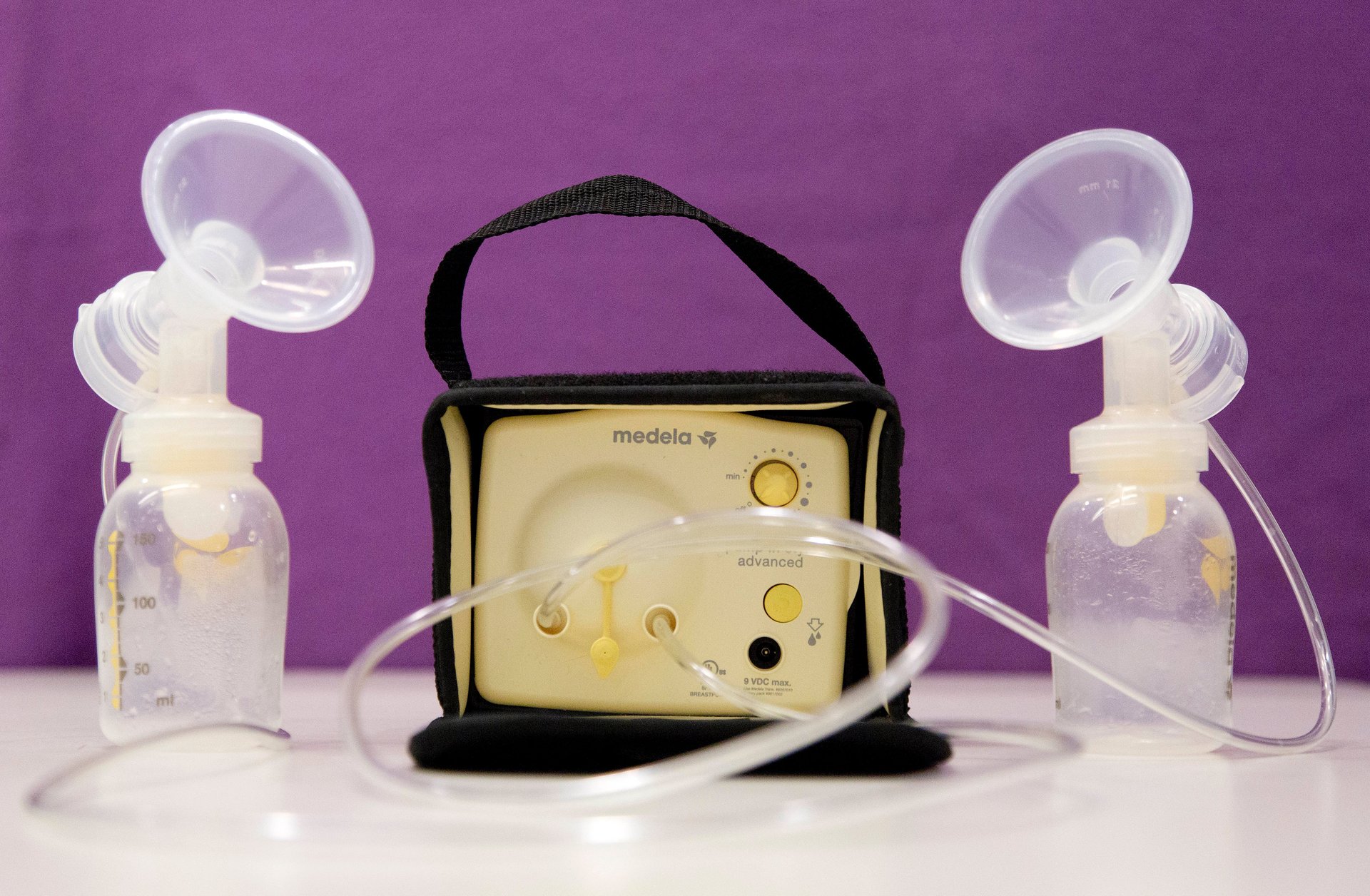A new kind of breast pump liberates moms from everything but the tyranny of multitasking
Breast pumps have completely changed the game for mothers who want to breastfeed. They make it possible for someone else to feed the baby while the nursing mother sleeps, takes a shower, or does something completely unrelated to childrearing. They allow women who breastfeed to work full-time jobs. They can help stimulate milk supply. They’re an essential tool of modern parenthood.


Breast pumps have completely changed the game for mothers who want to breastfeed. They make it possible for someone else to feed the baby while the nursing mother sleeps, takes a shower, or does something completely unrelated to childrearing. They allow women who breastfeed to work full-time jobs. They can help stimulate milk supply. They’re an essential tool of modern parenthood.
They also really suck.
Pumps have a lot of small parts that need frequent sterilization. They’re drippy, messy (the high sugar content in human breastmilk make it real challenge to clean up once it has dried), noisy, and time consuming. Electric pumps must be plugged in, keeping moms half-naked and tethered to an outlet; to pump both sides at once you essentially have to be naked from the waist up. You can’t help but feel vaguely bovine with two plastic bottles and a bunch of tubing dangling from your chest. Convenience and dignity have no quarter here.

Where there’s a problem, there’s an entrepreneurial opportunity. “We completely reimagined the breast pump,” says Naomi Kelman, the CEO and president of Willow, a next-generation breast pump. “One criteria for us was, it needed to be an all-in-one design that was simple enough and compact enough that a woman could literally put it in her bra, and go off and do what she needed to do over the course of the day.”
The promotional materials for Willow show women working at their laptops, chilling at the playground with their children, walking the dog, enjoying family dinner, all with the hands-free pumps coyly peeking out from their necklines. As someone with two kids, who formerly used a hand pump in a bathroom stall in a tech-bro coworking space in Brooklyn, I am here to say, I love the idea of Willow, but please don’t make me pump while cooking dinner. Moms are multitasked out. We want better breast pumps, but what we need is for the entire culture of work and family to change.
The idea that women can just cram more tasks into every hour, simultaneously pumping, filing expense reports, and dialing into a conference call, has real allure. (On the other hand, it might make you long for the days when you could shut the door, even to the dingiest of pumping rooms, for 20 minutes of peace and quiet, in exchange for hooking yourself up to an uncomfortable breast pump.) But the difficulties of being a working parent, particularly when you’re nursing, cannot be solved by consumer choice alone.
Devices like breast pumps have a long history of billing themselves as the key to women’s liberation, while carrying with them new sets of responsibilities and standards. In the late 19th and early 20th centuries, innovations like better stoves, refrigeration, running water, and electricity made domestic tasks safer and easier for homemakers. The consumer electronics that followed, vacuums and electric mixers and the like, made cleaning the house and baking a cake much easier, but also carried with them heightened expectations of a spotless home and endless desserts. As the marketplace rushed to fill women’s cupboards with appliances, it also filled their newfound free hours with responsibilities.

Those “labor saving devices”—as they’re known in academic circles—not only suggested that every wife and mother should spend her hours starching collars and frosting chiffon cakes, they undercut a more radical 19th-century feminist agenda that sought a wholesale redesign of the American home to place greater value on domestic work. “Melusina Fay Peirce envisioned cooperative housekeeping and planned for neighborhoods and housing design—including a new kind of multifamily apartment house with a single kitchen and laundry, and kitchenless houses,” Suzanne Slesin wrote in a 1981 review of The Grand Domestic Revolution: A History of Feminist Designs for American Homes, Neighborhoods and Cities, by Dolores Hayden.
The material feminists, as Hayden, who is now a professor at Yale, dubbed them, saw an opportunity to reimagine domestic life by creating domestic spaces with an eye toward the social and the communal. Obviously, modern American life went in a different direction—while women entered the workforce in numbers that might have surprised the material feminists, families became even more isolated, living in single-generation suburban homes. As technology and capitalism made a washing machine in every home—as opposed to a community laundry—the status quo, we became increasingly siloed in our nuclear units.
Or trapped half-naked in a bathroom stall, pumping. “We don’t want women to feel isolated in supply closets or public restrooms,” says Willow’s Kelman. It’s an admirable sentiment, but it doesn’t so much highlight the brilliance of the Willow’s design as it does the insanity of the culture that mothers who have to pump at work face every day.
Yes, innovation in the form of better breast pumps helps moms. And clearly, if you’re going to pump at work, or in the car commuting to work, which seems like a real opportunity for time saved, Willow is a better option than what’s been out there to date, just as a Mamava breastfeeding kiosk is a better solution than a bathroom stall. Consumer solutions can only get us so far though. Cultural changes, like the flexibility to work from home, on-site daycare, and generous family leave policies, wouldn’t just get moms out of the supply closet. They’d support a more connected society as well.